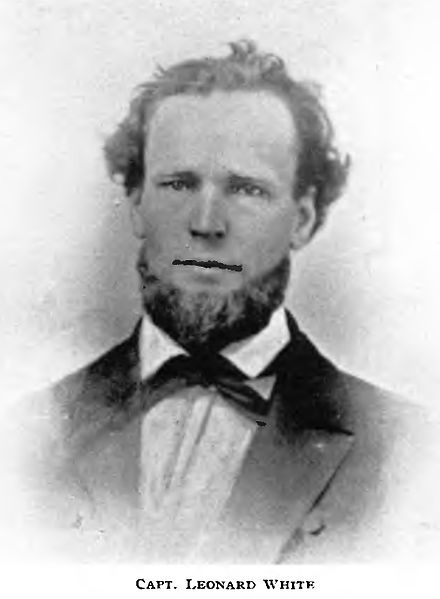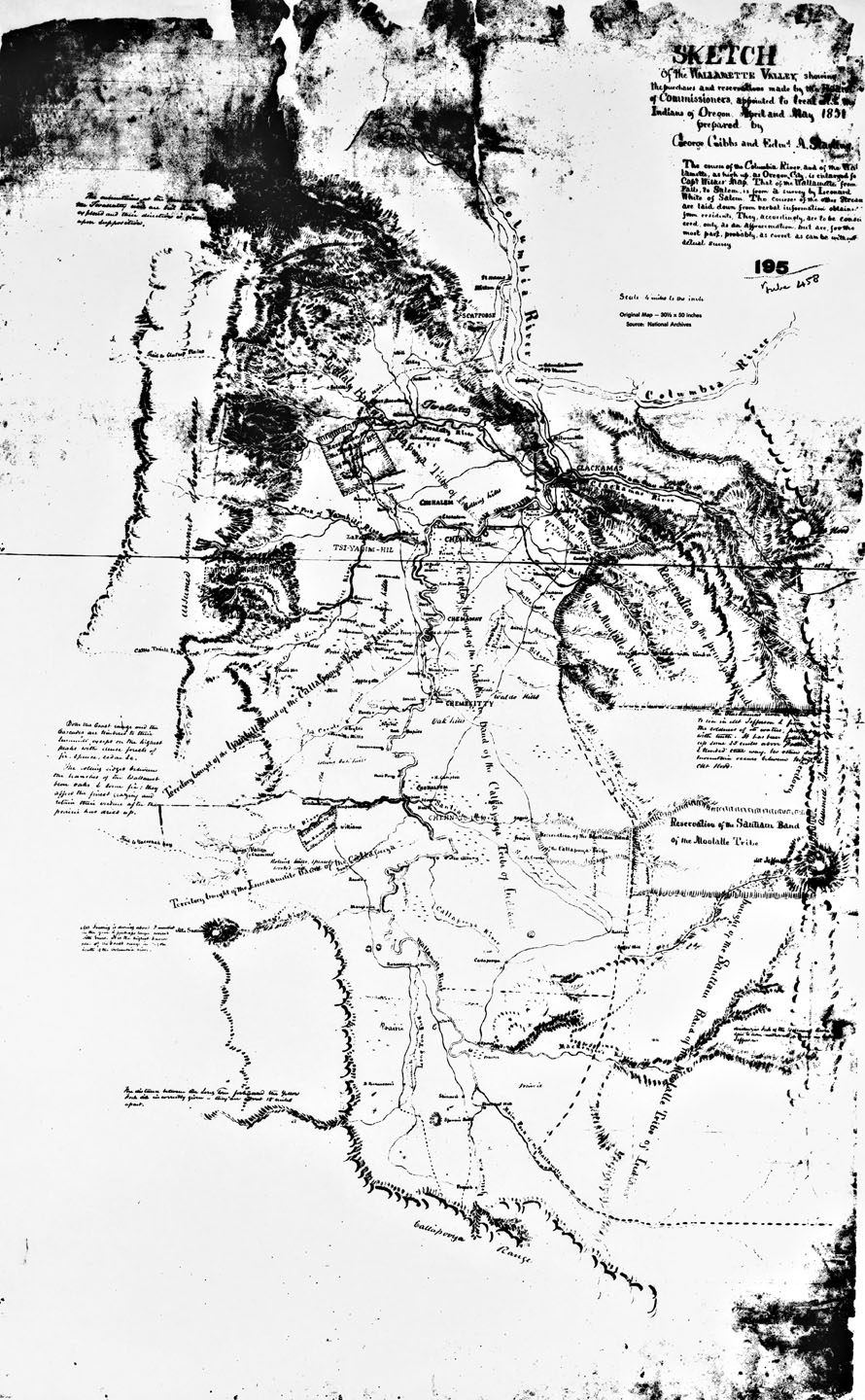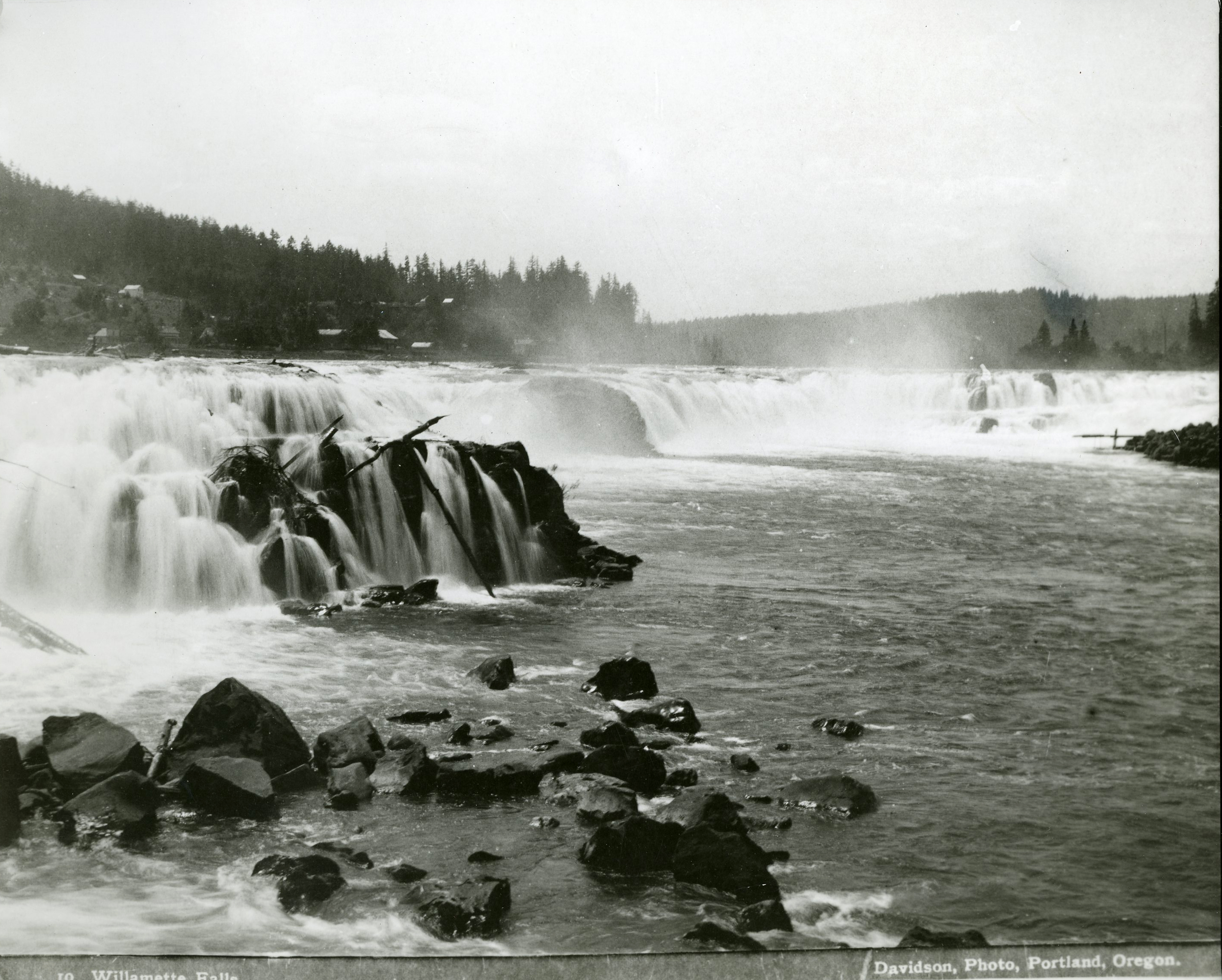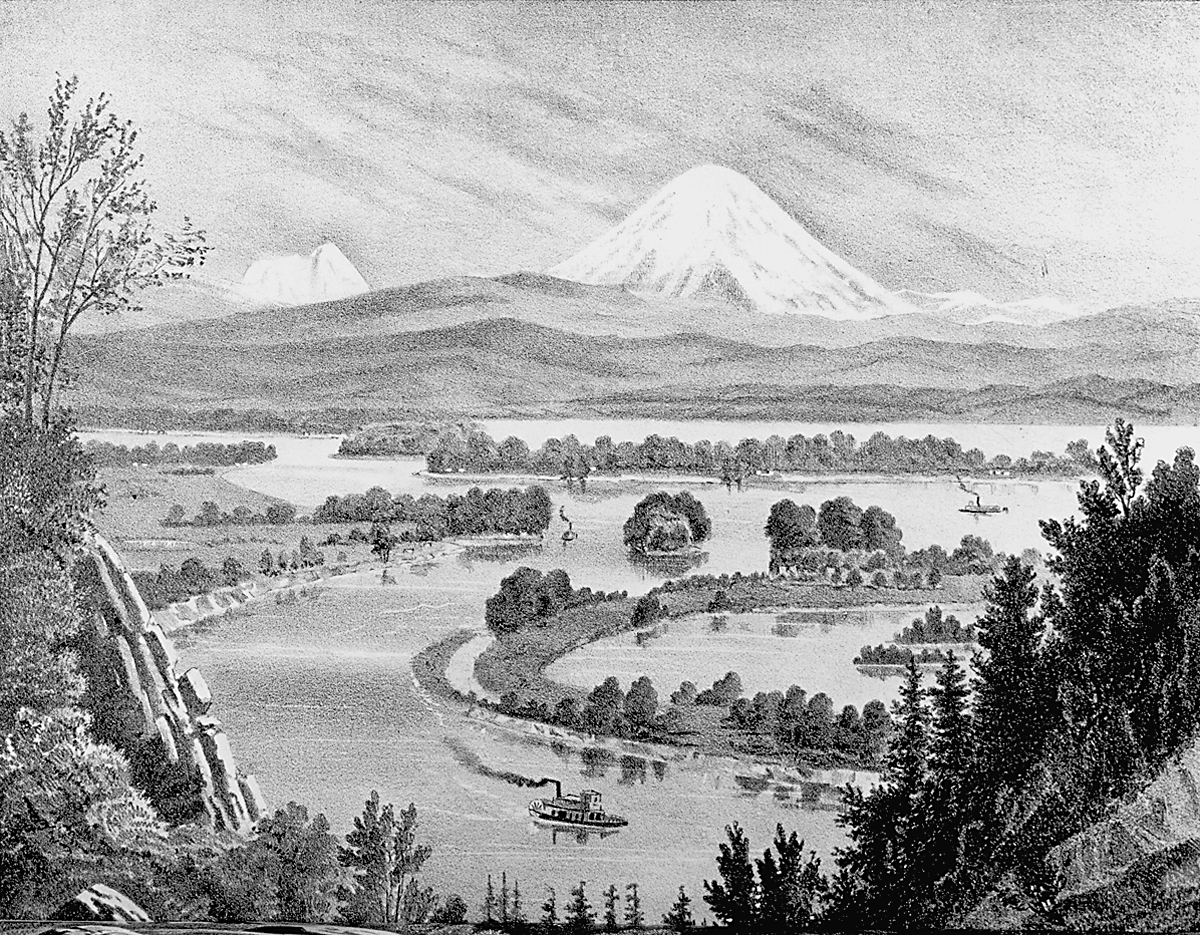Leonard “Len” White, a pioneering riverboat captain on the Willamette and Columbia Rivers, was the first to successfully navigate a sternwheeler to Corvallis, Harrisburg, and Eugene. He established a regular shipping route on the Willamette and later concentrated his talents on navigating and opening routes on the upper Columbia River, where only Native canoes had traveled. He is considered one of the greatest steamboat captains in the Northwest because he made possible regular shipping and transportation routes for goods and passengers from the Willamette Valley and the Upper Columbia to the Pacific trade routes, servicing San Francisco and the West Coast of North America.
Born in Indiana in 1827, Len White came to Oregon Territory in 1843 with his father James, stepmother Rhoda (Kinzie), and uncle Bartholomew, after stopping briefly in Urbana, Illinois. They took a 640-acre donation land claim in West Salem in 1845. His parents divorced in 1858.
In 1853, White married Gertrude Hall, who had survived the Whitman Massacre when she was a child. Married by Rev. David Leslie at the Methodist Episcopal Church in Salem, they had two children—a son, Judd, born in 1855 and a daughter, Fonetta (Scott), born in 1856. Judd drowned at Celilo Falls in 1863 while fishing. Len and Gertrude White divorced in 1867.
White went to California in 1848 and piloted the first steamboat on the Sacramento River. By 1850, he was navigating the rivers between Oregon City and Salem. He advertised in the Oregonian on April 17, 1851, that the keelboat Salem Clipper had successfully navigated the river to Salem on October 31, 1850, and that he was available for runs to “any conceivable point above” Willamette Falls. The advertisement likely caught the attention of George Gibbs and Edward Starling when they were drawing their 1851 “Sketch Map of the Wallamette Valley,” which documented the proposed reservations of the Kalapuya tribes. The map legend states that they used a “survey by Leonard White of Salem” for the section of the Willamette River from the falls to Salem, and that the map was created following the negotiations with the Indians of Oregon in April and May of that year. The survey was likely one of White’s navigational charts.
Captain White’s fame came from his pioneering fearlessness and willingness to brave any danger and nearly any untested river with the sternwheelers. In 1852, White built the sternwheeler Fenix at Canemah and piloted it and the Canemah above Willamette Falls until 1856, when he became pilot of the Clinton. The Fenix was the first to make the run to Corvallis in 1854; when he arrived, the citizens of the city gave him a banquet and a block of land. In 1855, the Fenix made it to Harrisburg despite the snags and debris in the river.
By 1858, Captain White had opened up the Willamette River as a regular transportation route for people and for the products of the pioneer farmers and ranchers as far south as Eugene. In 1858, he took assignment on the sternwheeler Colonel Wright, which had been built at the mouth of the Deschutes River. He was the first to navigate this type of craft above Celilo Falls. In preparation for the trip, White studied the upper Columbia and learned its dangers. Aided by a sail, the steamer made it to Wallula and back without incident.
In 1861, White piloted the Colonel Wright up the Snake River, the first to make landing at present-day Lewiston, thus opening that territory to more travel than ever before. Two years later, he captained the steamer Cayuse as far as the Grand Ronde River. That year, he also bought interest in the Cascadilla from W.H. Gray.
In 1865, he was captain of the Forty-Niner, which reached farther up the Columbia than ever before, to Little Arrow Lake, British Columbia, where he met ice. He continued to operate that craft on the upper river until he took ill with rheumatism and heart trouble in 1869. White traveled to San Francisco for medical attention and died in Portland on April 10, 1870.
-
![Capt. Leonard White]()
Capt. Leonard White.
Capt. Leonard White Courtesy Washington Secretary of State Archives
-
![Sketch of the Willamette Valley, 1851]()
Sketch of the Willamette Valley, 1851.
Sketch of the Willamette Valley, 1851 Courtesy of Oreg. Hist. Soc. Research Lib., OrHi 104274
Related Entries
-
![Canemah]()
Canemah
Canemah, once the bustling terminus of navigation on the upper Willamet…
-
![Columbia River]()
Columbia River
The River For more than ten millennia, the Columbia River has been the…
-
![Oregon Steam Navigation Company]()
Oregon Steam Navigation Company
Among early business enterprises in Oregon, the Oregon Steam Navigation…
-
![Willamette Falls]()
Willamette Falls
The largest falls in Oregon and the sixth in the United States by volum…
-
Willamette River
The Willamette River and its extensive drainage basin lie in the greate…
Related Historical Records
Map This on the Oregon History WayFinder
The Oregon History Wayfinder is an interactive map that identifies significant places, people, and events in Oregon history.
Further Reading
Corning, Howard. Willamette Landings. Seattle: University of Washington Press, 2004.
Jones, Nard. Swift Flows the River. New York: Dodd Mead, 1940.
Mills, Randall V. Stern-Wheelers Up The Columbia. Lincoln: University of Nebraska Press, 1977. First published 1947 by Pacific Press.







